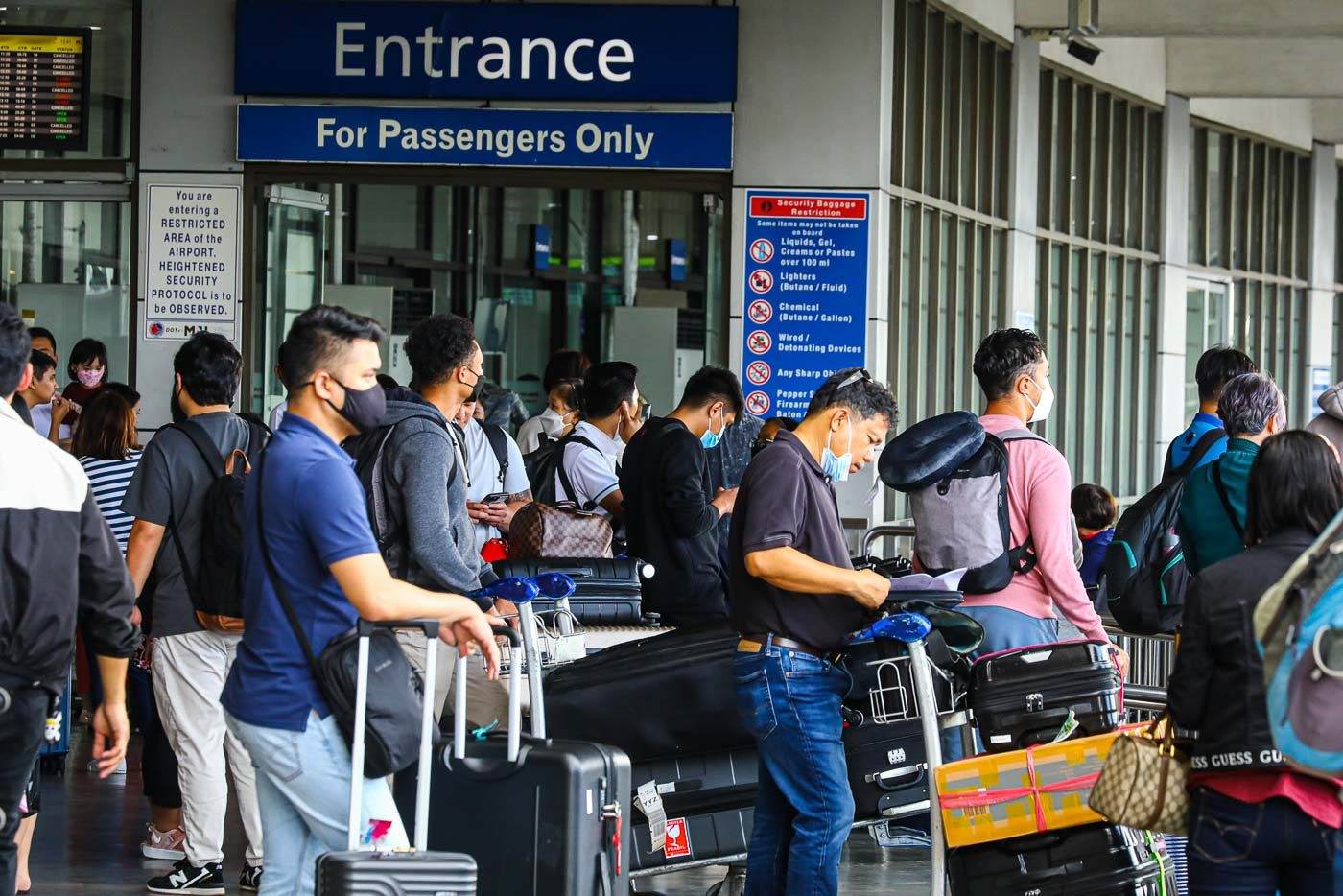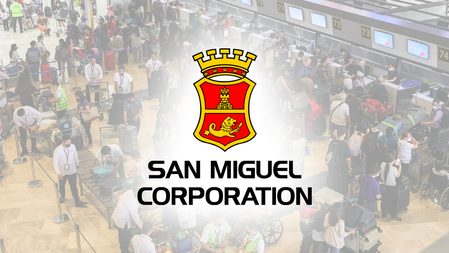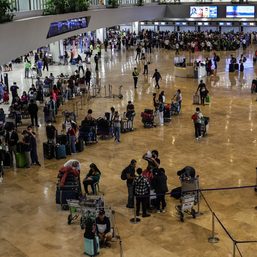SUMMARY
This is AI generated summarization, which may have errors. For context, always refer to the full article.

MANILA, Philippines – The Ninoy Aquino International Airport (NAIA) once again has the unwelcome distinction of being named among the worst airports in the world. But with the airport soon to be in the hands of San Miguel and the Incheon International Airport Corporation (IIAC), can NAIA finally become a world-class gateway?
In a study by business finance and lending research and information provider BusinessFinancing.co.uk, NAIA ranked as the fourth worst airport in Asia for business travelers, with an average rating of 2.78 over 10. Only Saudi Arabia’s King Abdulaziz International Airport (2.72/10), Kazakhstan’s Almaty International Airport (2.62/10), and Kuwait International Airport (1.69/10) ranked worse.
The study used passenger reviews from aviation customer review site Skytrax. Ratings from reviewers tagged as “business travelers” were then averaged to produce a ranked list of airports around the world and specific regions.
NAIA has garnered a long list of bad titles – from one of the “most stressful” airports in Asia to being downright the world’s worst airport. Despite being the country’s main international gateway, NAIA has suffered from underinvestment and mismanagement. The result: delayed flights, long lines, power outages, and even cash-gobbling security personnel.
But there is hope. The Philippine airport’s much-needed rehab is finally happening. Behind it is a consortium that includes San Miguel and IIAC, the state-owned operator of South Korea’s main airport. IIAC has only a 10% ownership stake in the consortium, but it serves as its operations and maintenance partner.
And as it happens, Incheon Airport ranks as the 20th best airport in the world for business travelers, according to the same study.
So what can one of the worst airports learn from one of the best?
A partner in Incheon
To understand, let’s start with the South Korean airport’s beginnings.
Plans for a new international airport for Korea date back to the late 1980s, after the existing Gimpo International Airport had reached capacity. Like NAIA, the Gimpo International Airport was right in the country’s capital region, Seoul. But this convenient location in the city also left little room for expansion and created noise pollution for nearby residential areas.
When it became clear that South Korea needed another international airport, the government eventually settled on a site more than 50 kilometers away from Seoul’s center. Construction for Incheon International Airport began on November 1992 on reclaimed land.
The airport opened for business in March 2001 with a passenger capacity of about 30 million per year, similar to NAIA’s current annual capacity. Since then, the IIAC has turned it into one of the world’s busiest and biggest airports, turning a profit of more than 860 billion South Korean won in pre-pandemic 2019 and now boasting an annual passenger capacity of 77 million.
The key was continuous expansion and modernization. Since it opened in 2001, Incheon International Airport has undergone multiple construction phases, with each increasing the airport’s capacity. It’s currently wrapping up its fourth construction phase, which adds a fourth runway, expands the airport’s second terminal, and builds more car parking facilities.

Incheon Airport also leans heavily on technology. For instance, it’s expanding its baggage transport system to a whopping 184 kilometers in length and intends to use a camera-based automatic tag reader to recognize and sort baggage. The airport also has a “Smart Pass,” which allows passengers to use their phones to scan their passport, biometrics, and boarding pass in advance, speeding up the immigration process.
The Incheon International Airport Corporation is no stranger to foreign airport projects. The IIAC aided in the master plan of the Mactan-Cebu International Airport and served as a construction project management consultant for the Puerto Princesa Airport in Palawan. The IIAC is also the operator of the Kuwait International Airport’s Terminal 4 and the Hang Nadim International Airport in Indonesia.
What improvements await NAIA?
In contrast to the Incheon International Airport, NAIA has invested pitifully little in upgrading its facilities over the years. From 2010 to 2023, the Manila International Airport Authority (MIAA) allotted only a total capital outlay of P27.09 billion, or P2.08 billion per year. (READ: [Vantage Point] Underspending left NAIA to rot)
In fact, the failure to upgrade NAIA’s facilities was partly behind the continuous power outages that have plagued the airport. Since the latest outage on June 9, 2023, MIAA has sworn to improve passenger boarding bridges, air conditioning, electrical works, and taxiways, among others.
Now, how will San Miguel and IIAC go about the NAIA rehabilitation?
Although NAIA’s new operator will be responsible for upgrading the airport’s runways, four terminals, and other facilities, the government did not outline exactly what structures or improvements need to be made. Rather, the consortium is expected to meet certain benchmarks and performance indicators, such as raising airport capacity from 35 million passengers a year to 62 million, and speeding up air traffic movements per hour from 40 to 48.
“We have a performance indicator on availability of parking. So you should be able to find parking within X amount. When you enter the airport, you should line up within a certain amount. You go through immigration, you go through security; there’s also an amount of time that’s prescribed for that. When you’re arriving, there’s a prescribed amount of time when the first and last baggage from the plane to the conveyor should come up,” Transportation Undersecretary for Planning and Project Development TJ Batan explained in a press conference.
There are many ways to meet these targets. For instance, the Manila International Airport Consortium – which made an unsuccessful unsolicited proposal to rehabilitate NAIA – bared a three-phased plan that aims to make operations more efficient, rather than adding more runways to the already-cramped airport area.

The plan includes flexible self check-ins, automated boarding gates, dynamic wayfinding and flight info displays, upgrades to the airfield, cross-terminal transportation, renovations to the airport facade, the expansion of all four terminals, and the creation of more taxiways and waiting bays.
Meanwhile, we aren’t too sure yet what San Miguel and IIAC’s plans are. There have been no specifics shared publicly, and the consortium has yet to hold a press conference.
The question now is, can the Incheon International Airport Corporation bring the same technological and operational prowess that it showed in developing the South Korean airport to the Philippines’ ailing international gateway? – Rappler.com
Add a comment
How does this make you feel?
![[Vantage Point] BDO lifts NAIA rehab](https://www.rappler.com/tachyon/2024/02/tl-naia-bdo-smc.jpg?fit=449%2C449)






There are no comments yet. Add your comment to start the conversation.